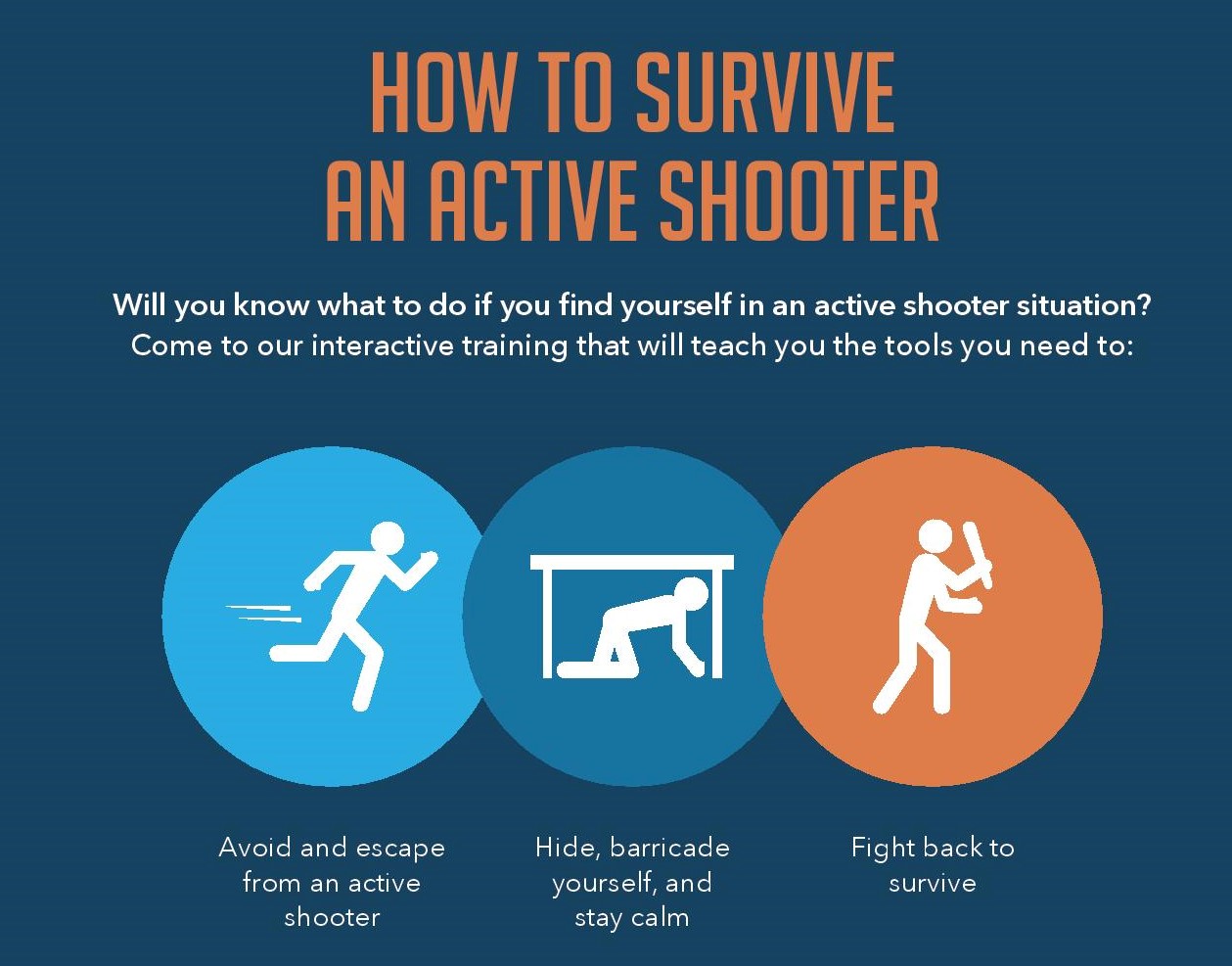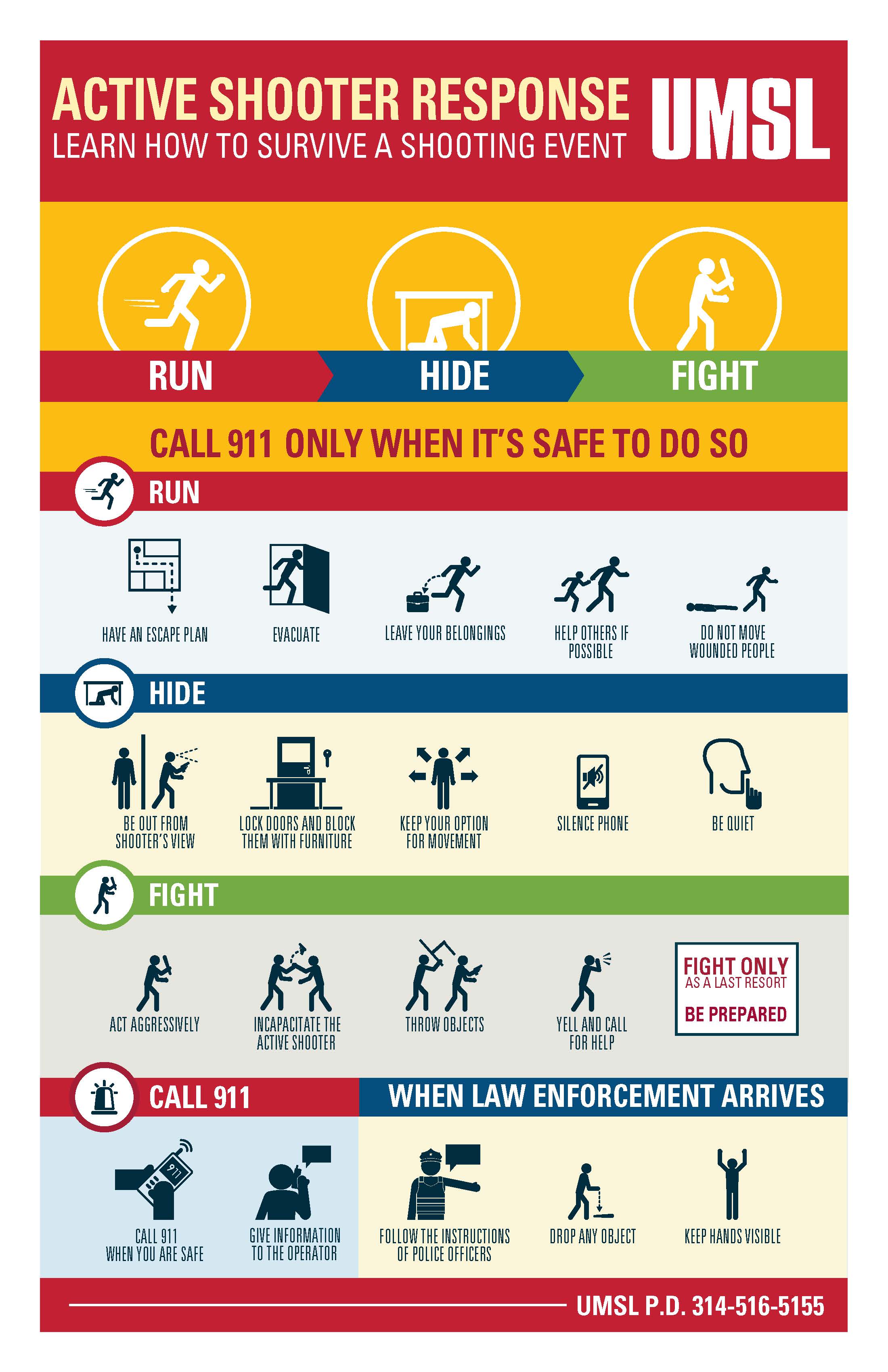Best Practices for Applying Active Shooter Training in Your Company
Best Practices for Applying Active Shooter Training in Your Company
Blog Article
Implementing Active Shooter Training: Best Practices for Developing a Safe and Prepared Area Setting
As areas face the upsetting fact of active shooter events, the implementation of thorough training programs comes to be vital. What are the essential aspects that can transform a typical training program into a robust model for neighborhood durability?

Recognizing the Requirement for Training
In an age noted by increasing cases of violence in public areas, recognizing the demand for energetic shooter training has actually never ever been a lot more essential. The occurrence of mass shootings across numerous environmentsâEUR" such as institutions, work environments, and buying centersâEUR" underscores the urgency for individuals and organizations to be gotten ready for such emergencies. Energetic shooter scenarios can unfold rapidly, leaving little time for people to react effectively. For that reason, detailed training initiatives can gear up participants with the expertise and skills to respond emphatically.
Additionally, the psychological effect of physical violence on people and areas can not be overemphasized. Training promotes a feeling of empowerment and preparedness, allowing people to feel even more safe in their environments. It also promotes a society of safety and security, where awareness and watchfulness become integral parts of every day life. The advantages of energetic shooter training prolong beyond immediate action; they consist of boosting communication procedures and boosting total precaution within companies.
Trick Elements of Effective Programs
Effective active shooter training programs incorporate a number of vital components that boost preparedness and response capabilities. Detailed educational program advancement is crucial, making sure that training content is pertinent, evidence-based, and customized to the specific needs of the organization or community. This includes recognizing the dynamics of energetic shooter incidents and the mental effect on people entailed.
2nd, reasonable training circumstances must be employed to simulate potential circumstances, permitting individuals to practice decision-making and reaction strategies in a controlled setting. These drills assist in muscular tissue memory and develop confidence among individuals.
Third, a concentrate on interaction protocols is crucial. Developing clear lines of interaction amongst law enforcement, emergency situation responders, and participants guarantees worked with feedbacks during an incident. Regular updates and correspondence course aid maintain communication paths clear and effective.
4th, ongoing analysis and feedback mechanisms should be integrated into the training program - active shooter training. Assessing the performance of training with individual responses and efficiency metrics allows for constant improvement
Finally, fostering a society of safety and preparedness within the community urges vigilance and positive procedures, ensuring that people are not only trained yet likewise participated in keeping a protected setting.
Engaging Area Stakeholders

To properly engage these stakeholders, it is important to interact the objectives and benefits of the training. Holding informational sessions can help make clear the training's purpose, address problems, and outline the roles each stakeholder may play. Moreover, developing a stakeholder advisory committee can help with recurring dialogue, permitting diverse perspectives and insights to be integrated into the training program.
Building partnerships with neighborhood leaders and organizations is also important. Their assistance can boost outreach initiatives, boost involvement, and ensure that training is customized to the special requirements of the community. In addition, stakeholders can help in distributing details and resources, strengthening the message of safety and readiness.
Ultimately, engaging area stakeholders not just enhances the training effort however additionally grows a sense of ownership among citizens, bring about a more resilient and informed community qualified of responding properly to possible hazards.
Training Distribution Methods
Making use of a variety of training delivery techniques is vital to accommodate the diverse knowing designs and needs of individuals in energetic shooter training programs (active shooter training). Reliable Recommended Site training can take a number of types, including talks, hands-on simulations, on the internet my review here components, and interactive workshops. Each method serves a distinct purpose and can improve the general discovering experience

On the internet modules offer versatility and access, enabling individuals to learn at their own rate. These can consist of videos, tests, and conversations to gauge understanding. Interactive workshops motivate seminar and analytical, advertising synergy and communication abilities.
Integrating a blended method that incorporates these methods not only improves the training experience but also ensures that participants are better prepared to react successfully in the event of an active shooter scenario (active shooter training). By dealing with numerous finding out preferences, organizations can develop an extra enlightened and receptive neighborhood
Continual Evaluation and Improvement
Normal evaluation and enhancement of energetic shooter training programs are vital to keeping their importance and effectiveness. As hazards evolve, so have to the techniques and methods utilized in training. Continuous analysis makes certain that training content reflects the most recent intelligence on energetic shooter cases, including lessons discovered from recent occasions and adjusting for emerging fads.
To promote this procedure, companies must develop responses systems that include individual analyses, specialist evaluations, and event debriefs. Collecting information on participant performance throughout drills and exercises is crucial, as it highlights areas needing renovation and notifies future training sessions. Furthermore, involving with law enforcement and emergency situation -responders can supply useful understandings into the practicality and applicability of training protocols.
Consistently arranged testimonials of training products and strategies need to be mandated, fostering an environment of advancement and versatility. Organizations has to also motivate a culture of recurring knowing, where team participants really feel equipped to recommend changes based upon their experiences. By dedicating to continuous examination and improvement, organizations not only improve the his response performance of their active shooter training programs but also strengthen their overall commitment to safety and security and readiness within the neighborhood.
Final Thought
In verdict, effective execution of active shooter training demands an extensive strategy that focuses on community involvement and practical simulations. Inevitably, a commitment to ongoing training and improvement cultivates a society of caution and preparedness, ensuring a safer atmosphere for all neighborhood members.
Report this page